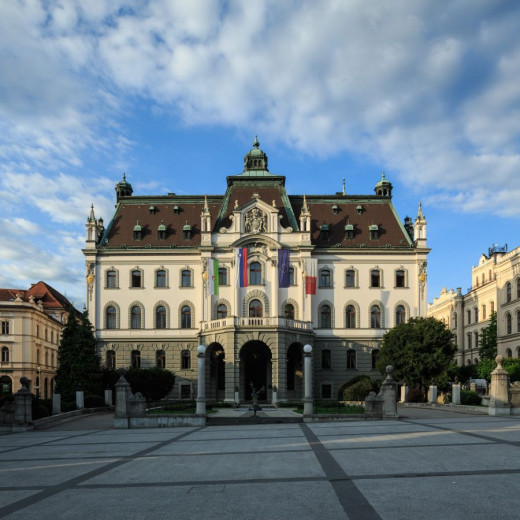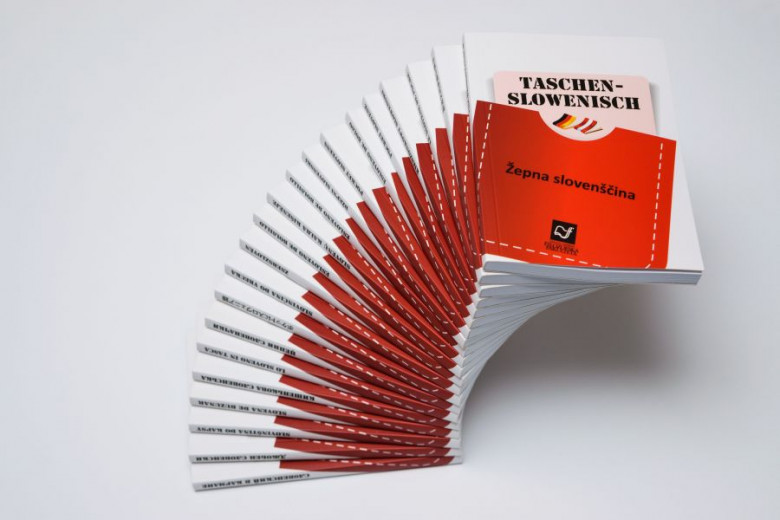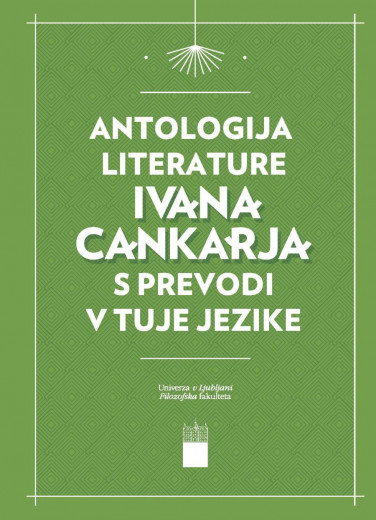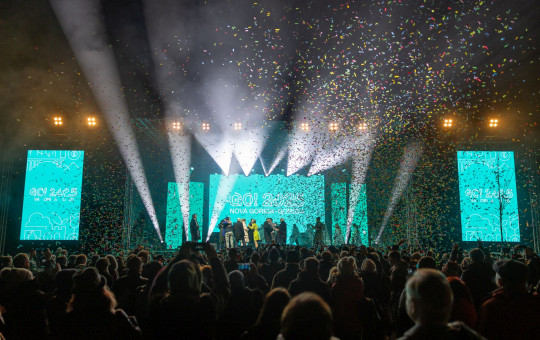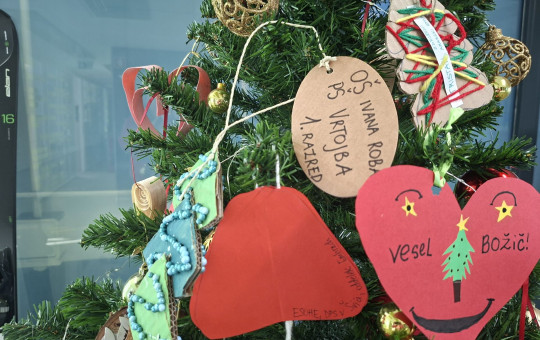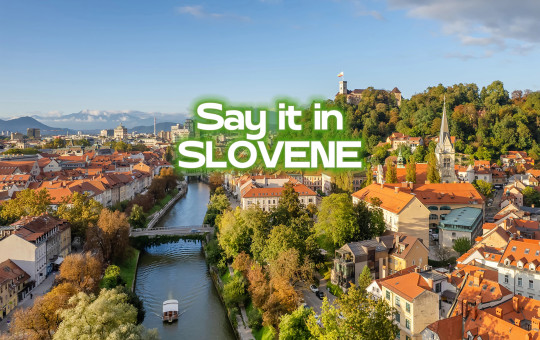Date: 26. November 2019
Time to read: 10 min
The Slovene at Foreign Universities (STU) programme has been running at the Faculty of Arts of the University of Ljubljana, both celebrating their 100th anniversary in 2019, since the 1960s. In terms of organisation, professional focus and content, the programme is a part of the Centre for Slovene as a Second and Foreign Language in the context of the Department of Slovene Studies.
The main mission of the STU programme is to support Slovene studies at foreign universities at the content and organisational levels, while its activity is also of national importance for the Republic of Slovenia, as Slovene studies present the Slovene language, literature and culture and Slovenia across the world. The programme supports the teachers and facilitates the teaching of Slovene, the knowledge of the language, research work, and contacts at universities across the globe.
In 2019, there are 62 universities included in STU which hold Slovene courses while 29 of them offer the language as an undergraduate and/or postgraduate programme. Every year, approximately 2,000 students learn or study Slovene at foreign universities.
Each year, some 50 diploma and master’s theses are written on various subjects related to the Slovene language as well as an average of five doctoral dissertations. Across the globe, there are more than 100 teachers holding courses in the Slovene language, literature and culture, 31 of these are employees of the Faculty of Arts of the University of Ljubljana and posted to foreign universities by the Republic of Slovenia.
The history of teaching Slovene at universities
Slovene was present at universities in the form of various courses and programmes as early as at the beginning of the 19th century. It has the longest history at the University of Graz, where the first Department of Slovene Studies was set up in 1811, as Slovenians often studied at this nearby university. The emergence of the second oldest department of Slovene studies is related to the setting up of the Department of Comparative Slavonic Linguistics, which was established in 1849 at the University of Vienna by Franc Miklošič, thus enabling the teaching and researching of the Slovene language. Miklošič’s importance is even bigger, as he was the Dean of the Faculty of Philosophy of the University of Vienna for three years and the University’s rector from 1854 to 1855. The third oldest lectures on Slovene at universities date back to 1874, and were held at the University of Zagreb.
Slovene during the period of the setting up of the University of Ljubljana
In addition to the universities in Graz, Vienna and Zagreb, in the early 20th century courses and lectures on Slovene were offered at universities in Belgrade, Prague, Padua, and Naples. These programmes are still being implemented today, and Slovene is offered as a language course and a study programme. Furthermore, this was also a time of increasing efforts to establish the first Slovene university, which were finally realised in 1919. The centennial of the first Slovene university, the University of Ljubljana and the Faculty of Arts as one of its five founding members, also marks 100 years of research and teaching of Slovene studies in Slovenia at university level, while both institutions are closely connected to universities across the globe.
The first lecture at the new university in Ljubljana, which had a strong symbolic note and was a lecture on the historical grammar of the Slovene language, was held by Professor Dr Fran Ramovš at the Provincial Manor in Kongresni trg on 3rd December 1919.
Before the University of Ljubljana was established, Dr Ramovš and Dr Rajko Nahtigal held lectures at the University of Graz. They were then joined by Dr Ivan Prijatelj and Dr France Kidrič, who came to Ljubljana from Vienna, and Dr Ivan Grafenauer from the University of Zagreb, all holding lectures on Slovene literature and language in Ljubljana. Professor Dr Rajko Nahtigal was also appointed the first Dean of the Faculty of Arts.
Slovenians who taught and engaged in research at universities across the globe were often responsible for Slovene content being included in the teaching and research work, as their reputation and recognisability as well as research achievements in Slovene studies in the international arena paved the way for Slovene studies in other locations. In 1918, Professor Janko Lavrin founded the Department of Russian and Slavonic Studies at the University of Nottingham, and Slovene studies are available within this department. In 2000, Professor Peter Herrity published Slovene: A Comprehensive Grammar, which is still considered the most comprehensive grammar of Slovene available in English.
Between the two world wars, Slovene was being taught at the universities in Munich (after 1920), the Jagiellonian University in Krakow in 1926, in Hamburg in 1931, and the Comenius University in Bratislava in 1938. Today, Krakow and Bratislava have complex departments offering Slovene studies to more than 80 enrolled students a year. During this time, Matija Murko, who taught Slavonic Philology at the Department of Slavonic Studies at the University of Vienna, was a full professor at the universities of Graz, Leipzig and the Charles University in Prague, co-founded the Institute of Slavonic Studies in Prague and led it from 1932 to 1941. The favourable position held by the Slovenians as a part of the new state, the Kingdom of Serbs, Croats and Slovenes, which was formed after the dissolution of the Austro-Hungarian Empire in 1918, and especially in the Drava Banovina, a province of the Kingdom of Yugoslavia (1929–1945), enabled substantial cultural and linguistic development and official use of Slovene, and brought the Slovene people recognition in Central Europe of the time.
The beginning of systematic cultivation of Slovene at foreign universities
Following major social changes and the transformation of Europe after the Second World War, by 1960 Slovene had become a part of study programmes at universities of neighbouring countries and in the common country of Yugoslavia: in Trieste in 1945, in Zadar in 1950, in Budapest in 1953, in Novi Sad in 1958, and in Skopje in 1959. After 1960, organised cultivation of Slovene across the globe started emerging, and the Faculty of Arts of the University of Ljubljana played a crucial role in this right from the start. At the beginning, it selected and co-financed teachers of Slovene for foreign universities and sent them Slovene books. In 1964, they started implementing the principle of reciprocity with foreign language teachers coming to the Faculty and teachers of Slovene going to foreign universities.
Throughout all these years, the content, organisation, implementation and the development of the STU programme have been the responsibility of the Faculty of Arts of the University of Ljubljana. Initially, the activity was funded by the National Educational Community and later by the ministry responsible for higher education. This model of providing support to Slovene at foreign universities, which enabled direct academic contact with foreign institutions and gave preference to professional management of the programme, contributed significantly to the successful development of departments of Slovene studies around the world.
Seminar of Slovene language, literature, and culture
A special role as been played by the two-week Seminar of Slovene language, literature and culture, which department members first organised in 1965 in order to encourage cooperation with foreign universities. The Republic of Slovenia funded the event and soon, in 1972 (the 8th Seminar), it attracted 120 students and teachers, researchers, translators, and professionals employed in culture from foreign universities and Slovenians living abroad, and this number has remained high until the present day. In 2019, the 55th Seminar was organised. For numerous participants, this Seminar is their first contact with Slovenia and the Slovene language, and encourages them to start focusing on it in a professional manner. Some of them have managed to set up departments of Slovene studies or upgrade Slovene courses, turning them into study programmes, e.g. Lidija Arizankovska in Skopje, Maja Đukanović in Belgrade, Olena Dzjuba Pogrebnjak in Kiev, Jelena Konicka in Vilnius, Aleš Kozar in Pardubice, Istvan Lukacs in Budapest, Olga Plotnikova in Moscow, Emil Tokarz in Katowice and Bielsko-Biała.
As the years went by, the potential and the requirements of the Seminar grew to an even higher professional level, and the first international scientific meeting for Slovene studies, the Obdobja Symposium, was organised in 1979 during the first few days of the Seminar. The symposium became a traditional event, and a special conference that saw its 38th edition in 2019.
With new possibilities for cooperation, new departments of Slovene studies were set up from 1960 to 1980: Seattle (1964), Rome and Moscow (1965), Sofia (1975), Paris (1969), Szombathely (1970), Warsaw (1972), Klagenfurt (1973), Nottingham (1974), Udine and Katowice (1976), Regensburg and Bucharest (1978), Bern (1981), and in 1989 in Tübingen and Würzburg. Rado L. Lenček, professor of Slavonic languages at Columbia University in New York, contributed greatly to the growing presence of Slovene studies in the USA, including through his efforts to set up the Society for Slovene Studies in 1973. Since 1977, the Society has been publishing the Slovene Studies international journal.
In independent Slovenia
In the 1989/90 academic year, just before Slovenia’s independence, there were 25 departments of Slovene studies at foreign universities across the globe, and 13 teachers from the Faculty of Arts were posted to work at foreign institutions. In the 1990s, departments of Slovene studies were set up at universities in Kansas in 1990, in Gent in 1994, in Brno, Vilnius and Trieste within the translation studies department in 1995, in Brussels in 1996, and in Tokyo, London and Łódź in 1997. A teacher was posted from Slovenia to the Macquarie University in Sydney from 1989 to 1995, although this cooperation was discontinued due to the high costs involved.
The enlargement of the European Union and Slovenia’s accession in 2004 brought new circumstances, which significantly affected the operation and development of Slovene studies at foreign universities. The European university arena was unified with the adoption of the Bologna Declaration in 1999, expanding the possibilities of inter-university cooperation and student and staff mobility. ECTS credits have allowed new courses to be included in study programmes, while a growing number of students of non-linguistic programmes have decided to enrol in a course of Slovene. The Republic of Slovenia supported the opening of departments of Slovene studies in countries which are home to larger Slovenian communities, at other universities across the EU and around the globe: in Buenos Aires in 2003 and in La Plata in 2006, in Cleveland, Lisbon, Lviv, Beijing (BFSU) in 2008, in Granada in 2009. Departments of Slovene studies were also set up in Gdansk in 2005, Pardubice in 2006 and Kiev in 2010. With support from Slovenia, there were additional departments of Slovene studies set up after 2010: in Sarajevo in 2014 (again), Köln in 2015, Hebei in 2016, in Beijing at the University of International Studies in 2017, in Cordoba in Argentina, in Banjaluka, in Tokyo at the Soka University, and at Stanford University in 2018, and in Rijeka in 2019.
In the last few decades, the activities and programmes in Slovene studies have been growing stronger at universities across the globe due to the stable and systematic support from Slovenia and the relentless work of STU teachers, individuals at universities, and the wider Slovenian community. In 2015, the National Council of the Slovenian National Minority in the Republic of Serbia and the University of Belgrade, the Faculty of Philosophy, started issuing Slovenika, a journal for culture, science and education. Numerous international conferences have been organised at universities across the globe, including as a celebration of significant anniversaries of departments of Slovene studies, e.g. the 100th anniversary in Belgrade, the 90th anniversary of the Faculties of Arts in Bratislava, the 90th anniversary of the department of Slovene studies in Prague, the 40th anniversary in Moscow.
In 2018, the Cankar i(n) mi student conference was organised in Belgrade. In cooperation with regional associations and universities from neighbouring countries, the Slavic Society of Slovenia organised congresses in Klagenfurt, Trieste, Szentgotthárd, Zagreb, and Udine.
In the context of the STU programme, the World Days projects have been organised since 2004 as well as numerous other events in cooperation with teachers, foreign universities, Slovene diplomatic missions, and various project partners, e.g. RTV Slovenia, the Slovenian Book Agency, the Slovenian Film Centre, the Government Office for Slovenians Abroad, and publishing houses. Some three to five thousand visitors attend these events every year, and STU projects contribute to the spread of the Slovene language, literature and culture, and thus the Republic of Slovenia itself, along with the promotion of Slovene studies.
A brief overview of the STU programme and the history of setting up departments of Slovene studies shows how the Slovene language found its way into study programmes at universities across the world, and in a rather short span of time achieved major progress in the number of departments of Slovene studies, as well as their development and increasingly broader activity. International professional connections between departments of Slovene studies are growing stronger, and will also continue directing the activity of these departments as a part of the globalised university market in the future.


